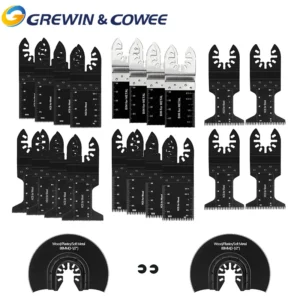Table of Contents
ToggleSaw Blade Manufacturer
Selecting the right saw blade manufacturer is a crucial step that significantly impacts your woodworking, construction, or metalworking projects. With an array of options available in the market, making this decision may feel overwhelming. You might wonder what factors you should consider, and how they directly relate to your specific needs. Let’s break this down systematically to help you make an informed choice.
Understanding Your Project Requirements
Before diving into specific manufacturers, it’s essential to identify what you need from a saw blade. Are you cutting hardwood, softwood, or perhaps various metals? Each application requires a different type of blade to achieve optimal results.
For example, if you’re working on a project that involves cutting plywood, you need a blade specifically designed for that material. Such a blade typically features a high tooth count to ensure clean cuts without tears. Conversely, if you’re cutting thick lumber, a saw blade with fewer teeth might be more suitable, as it allows for more efficient material removal.
Furthermore, consider the type of saw you are using. A table saw configuration might differ from a miter saw, which influences the kind of blades compatible with your equipment. This up-front understanding of your specific requirements will serve as a guiding principle when evaluating any saw blade manufacturer.
Quality Over Price
When browsing through different saw blade manufacturers, it’s tempting to solely focus on price. However, the quality of the blade can greatly affect your overall project outcomes. A cheap blade may “save you money” initially, but poor performance might lead to rough cuts, wasted materials, and even machinery damage in the long run.
Take a look at popular brands with proven reputations. For instance, Freud and DeWalt are recognized for their high-quality blades that maintain sharpness over time and provide smooth cuts, enhancing the quality of the finished product. While you may pay a bit more upfront, investing in dependable blades means fewer replacements and repairs later on.
Evaluating Material and Design
The composition of the blade is another critical aspect of your evaluation process. Different manufacturers specialize in blades made from various materials, which can significantly influence their performance and durability.
For example, tungsten carbide-tipped (TCT) blades are common among many professional woodworkers. They offer durability and long life, making them advantageous for extended use. Brands like Makita and Bosch often have TCT options tailored for different materials, which ensures you are getting the right blade for your project needs.
Moreover, the design of the blade, including the configuration of the teeth and the kerf width, should fit your cutting purpose. A saw blade manufacturer that provides comprehensive details on these aspects can help you better understand which product aligns with your specific requirements.
Customer Support and Reputation
Another significant consideration in choosing a saw blade manufacturer is their customer support. Once you make a purchase, it’s vital to have a resource for any questions or concerns. Companies that provide extensive customer service tend to build a loyal client base. For instance, seeing positive reviews regarding customer support can be a significant factor in your decision-making process.
Moreover, consider the reputation and track record of the manufacturer. Are they well-reviewed by industry professionals? Is their product line tested and trusted? Research companies online and arrange for discussions with fellow craftsmen to get an idea of who the industry endorses. A reputable saw blade manufacturer often offers more than just products; they provide trust, reliability, and performance assurance.
Versatility and Application Areas
You should also think about the versatility of the blades you are considering. A good saw blade manufacturer will offer a variety of blades for multiple applications. For example, if you frequently switch between wood, plastics, and metals, look for a manufacturer that produces universal or multi-material blades. This way, you minimize the need to switch blades frequently and streamline your workflow.
Furthermore, consider the size of the saw blades as well. Many products are available in various diameters, and selecting the right size for your equipment is crucial. Specifically tailored sizes can enhance the efficiency and precision of your cutting process.
Warranty and Guarantee Policy
Lastly, don’t forget to check the warranty and guarantee policy for the blades you’re considering. A reliable saw blade manufacturer stands behind its products, offering warranties that protect you from defects or workmanship issues. Warranties allow you to buy with confidence, knowing that if you experience any issues, the manufacturer will assist you in resolving them.
Conclusion
Choosing the right saw blade manufacturer can be transformative for your projects, leading to better results and increased efficiency. By understanding your specific needs, focusing on quality, evaluating material, and ensuring good customer support, you can make better-informed decisions. Remember to look beyond just cost; consider versatility and warranty policies as part of the investment in your tools.
Whether you are a hobbyist or a professional, taking the time to choose the right saw blade manufacturer will ultimately enhance not only the quality of your work but also your satisfaction with the finished products. Armed with these insights, you can confidently navigate the market and make choices that align with your cutting needs and goals.
